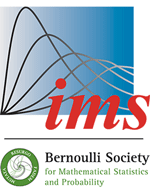Abstract
We give a probabilistic interpretation for the Barnes $G$-function which appears in random matrix theory and in analytic number theory in the important moments conjecture due to Keating-Snaith for the Riemann zeta function, via the analogy with the characteristic polynomial of random unitary matrices. We show that the Mellin transform of the characteristic polynomial of random unitary matrices and the Barnes $G$-function are intimately related with products and sums of gamma, beta and log-gamma variables. In particular, we show that the law of the modulus of the characteristic polynomial of random unitary matrices can be expressed with the help of products of gamma or beta variables. This leads us to prove some non standard type of limit theorems for the logarithmic mean of the so called generalized gamma convolutions.
Citation
Ashkan Nikeghbali. Marc Yor. "The Barnes $G$ function and its relations with sums and products of generalized Gamma convolution variables." Electron. Commun. Probab. 14 396 - 411, 2009. https://doi.org/10.1214/ECP.v14-1488
Information





